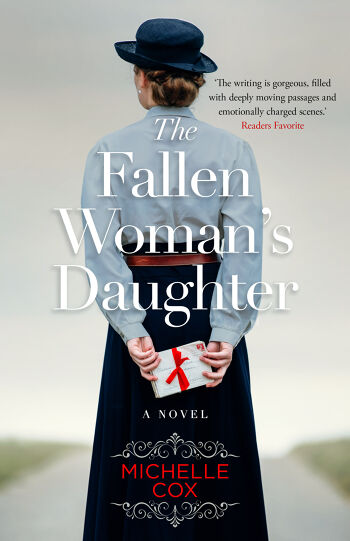
When eight-year-old Nora arrives at the Park Ridge School for Girls in 1932, she is sure there’s been some mistake. She can’t imagine why she and her little sister, Patsy, were torn from their mother and then subjected to the cruel whims of the house matron, Mrs. Morris. When their mother fails to rescue them week after week—and Mrs. Morris drops hints that their mother may be a “fallen woman”—Nora begins to doubt they will ever see her again.
Nine years prior, at seventeen, Gertie Gufftason runs off with Lorenzo, the barker for the traveling carnival passing through her small coal-mining town in Southern Iowa. Thinking she is embarking on a fantastic adventure, Gertie is bitterly disappointed by the life that follows and is thrown into despair when the State removes their two daughters.
Gertie eventually tracks down her girls at the Park Ridge, but she is shocked by Nora’s cool reception. Nora reluctantly returns home with Gertie and Patsy, but she is determined to live a more perfect life than her mother. It is only when she discovers a secret Gertie has kept hidden all these years that Nora begins to fully understand—and forgive—her mother’s tragic choices . . .
Assessment:
Plot/Idea: The Fallen Woman's Daughter is a rich novel about family bonds, centering on Nora and Patsy, who are whisked away from their mother, Gertie, and placed in a girls’ home. Neither understands the events leading up to their family being torn apart—or the pain in store for them in the future—but their love for Gertie stays constant, despite the heartbreak they suffer individually and together.
Prose: Cox forms striking descriptions that build layers into the story, lending the main characters a vivid realness that will stick with readers long after the last page. The prose is crisp and clear, with a bright tone that pushes the plot forward.
Originality: The interlacing of generations throughout this engaging novel is moving, as Cox allows her characters to see each other more fully through each other’s eyes—and their experiences together. The thread tying the women together over the years is moving to follow.
Character/Execution: Cox’s characters are eloquently drawn, each with believable motives that make them both authentic and appealing. Nora’s strength and resolve to look after her sister and carve some kind of life for them from literally nothing is impressive to see; meanwhile, Gertie’s initially blasé attitude toward life comes across as disheartening, but she eventually shows pluck that makes her lovable as well—and garners her a sweet, transformative ending of her own.
Date Submitted: April 03, 2024

Cox brilliantly crafts a non-linear story, shifting third-person viewpoints between Nora and Gerda, allowing readers to gain a comprehensive understanding of the characters' inner worlds. Its appeal rises from its capacity to make readers consider the consequences of critical actions and speculate on alternative paths not taken. Cox depicts the continuous struggle of an illiterate woman caught between tragic relationships and the need for atonement in Gerda. The Fallen Woman’s Daughter also explores the enduring dynamics of sisterhood familial obligations, and the emotional ramifications of parental neglect through Nora, whose hopeful and longing letters for her mother while in Park Ridge turn into indifferent dutiful reports as she loses faith in their reunion.The novel's characterization establishes a superb, life-like web of nuanced relationships and personalities that feel remarkably authentic. There is an underlying thread of love and resilience that flows through the generations, and Cox emphasizes the importance of literacy albeit indirectly.
Although at times the transitions between decades and perspectives could be more smooth, this multi-generational narrative emphasizes how choices and attributes are often handed down across generations, demonstrating the fundamental bonds between parents and children. This feels like an urgent message to women to know and choose what they deserve.
Takeaway: Multi-generational family saga of love, tragedy, and redemption.
Comparable Titles: Lisa Wingate's Before We Were Yours, Stacey Hall's The Foundling.
Production grades
Cover: A
Design and typography: A
Illustrations: N/A
Editing: A-
Marketing copy: A
"THE FALLEN WOMAN'S DAUGHTER is a compelling, poignant story of mothers, sisters, and daughters spanning three generations from the roaring twenties to the swinging sixties. Starstruck Gertie yearns to escape the dreary mining town of her youth, but a hasty marriage only leaves her a desperate young mother—and when her daughters Nora and Patsy are torn away and sent to a girls' home, they learn to rely on no one but each other. By the time Gertie comes back into their life eager to make amends, Patsy's wildness and Nora's bitterness are ingrained, changing the lives of all three women as war envelops the world and daughters become mothers in turn. Michelle Cox writes flawed, fascinating women with understanding, compassion, and grace—I rooted for them with every turn of the page!"—Kate Quinn, NYT best-selling author


